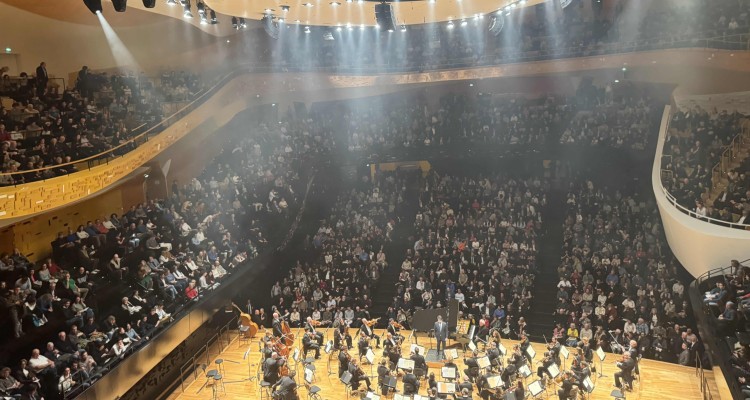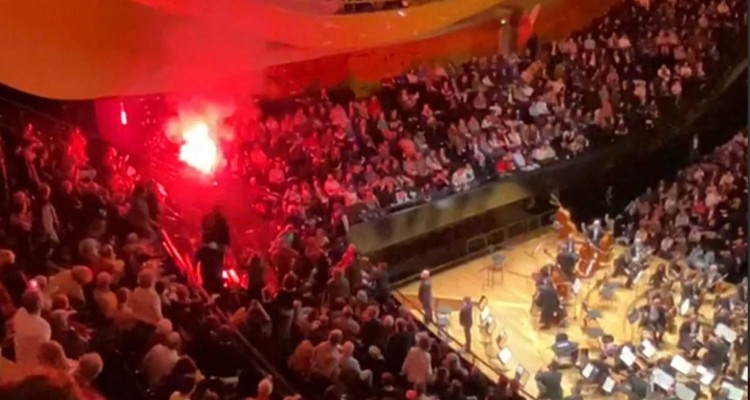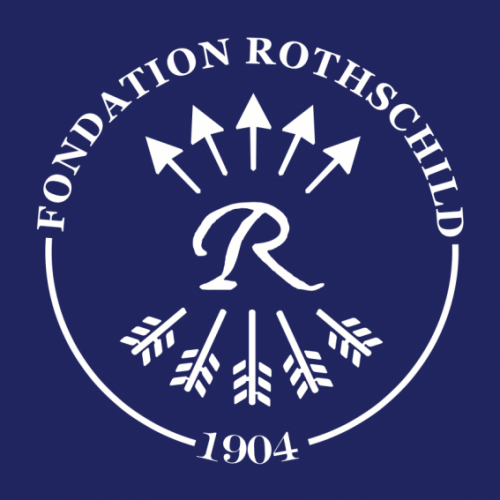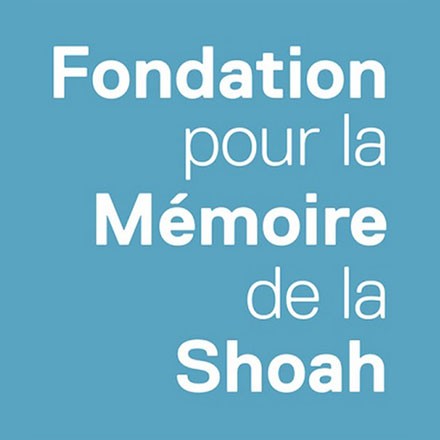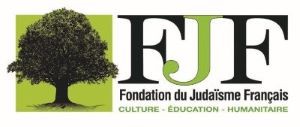Adolfo Kaminsky, born in 1925 in Argentina and deceased in January 2023, has become a legend: the resister and forger known for specializing in the manufacture of false papers during World War II. He wanted to be a painter, he became a secretive photographer, reluctant to show his work – before the Museum of Jewish Art and History (mahJ) in Paris shed light on dozens of snapshots taken over decades[1]. A clandestine life, in his work as in his commitments: after the war, he makes false papers for the Haganah, he is the forger of the networks of support for Algerian independence in the 1950s and 1960s, that of the revolutionaries of South America as well as opponents of dictatorships in Spain, Portugal and Greece… The philosopher Elisabeth de Fontenay attests to her admiration.
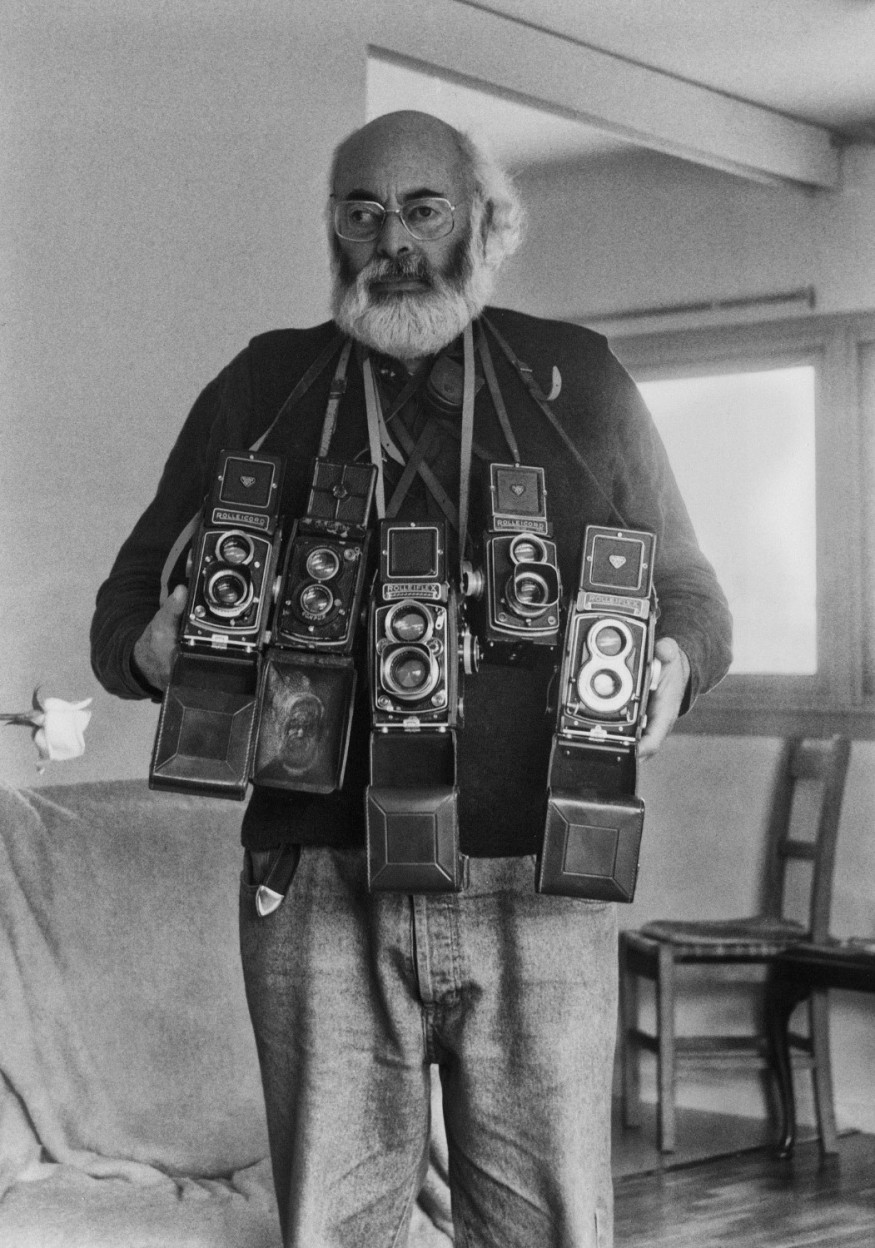
The craft of forgery, like the photographic shot, prompts us to wonder about authenticity, the here and now of the original, the authority of the thing itself, which, escaping reproduction, cannot, all the more so, be forged. And yet, what a true, truthful and genuine life it was for Adolfo Kaminsky, this forger, this genius craftsman in the service of survival and freedom, this artist-photographer who tried, when he had the freedom to exist, to translate the beauty of the world in fragments! A man, true to himself, who worked in the shadow of clandestine laboratories and in the light captured by the Rolleiflex.
Snapshot
“You photograph anything,” said his brother one day. In a time other than one of distress, Adolfo Kaminsky could have had a scientific career, but he had always wanted to be a painter. The photographers who observe and then “take” a picture have something of the flâneur whose glance and capture, devoid of voyeurism, keep their distance. Is this capture, the theft of an image, of a moment? No, with Kaminsky, the lens is a bird that lands. Paris, water, night, children, flea markets, small trades, such are the subjects that he photographs.
When the Liberation restored to him and his family the right to live, this manufacturer of false papers gave this right a completely different meaning: the right to persevere in one’s own being, to exist as one pleases, even as one fancies. This is the freedom that Kaminsky granted himself in part when he began to live, to stroll and to photograph in broad daylight while continuing his activity as an underground agent in the service of France, then of stateless people who wanted to found a Jewish state and live there, and then of struggles for decolonization and national liberation.
So it is one and the same man that we must celebrate, looking at him both in the darkness of the clandestine workshop and in the light of an artist’s work. There was a time to say no to the Nazis and their cronies, no to colonial torture, and another to say yes to the beauty and enigma of the world. The two times could coexist.
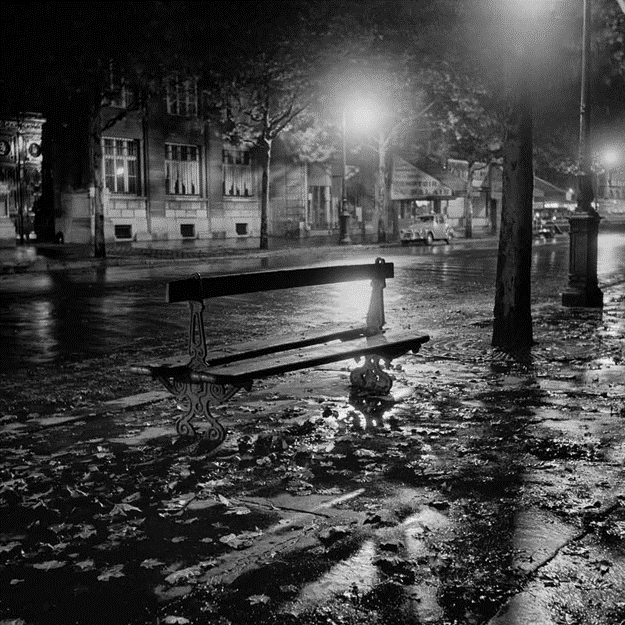
To get closer to the shattered reality of Adolfo Kaminsky’s life and work, that great work made up indissolubly of photographs and false papers, I have to take a detour to a 1948 film shot in Poland, Unzere Kinder, “Our Children.” Two comic actors from the Yiddish theater, Szymon Dzigan and Yisroël Schumacher, return to their home country, Poland, after the German defeat and perform, in front of survivors of the ghettos and camps, a scene that is supposed to evoke the hardships endured by Jews during the war. This Yiddish theater, which was both beloved of the common people and extremely comic, had a great reputation among Ashkenazi Jews before the war, as evidenced by the enthusiastic pages Franz Kafka devoted to it in his Diary. But then a child heckled the actors, he and his classmates declaring that “it wasn’t like that.” The two actors come to the rescue of these survivors, allowing them to attend once more one of those satirical and tender performances they loved so much before the catastrophe. But, deeply disturbed by having been booed, they decide to spend a day and a night in an orphanage for surviving children. The orphans will give them a realistic and no-less-theatrical representation of what famine and fire in the ghetto were like. After having heard horrifying stories behind the doors of the dormitories, they return, having absorbed the lesson of reality and understood that these little improvised actors represented, surrounded by specters, what they had experienced: the end of a world. The two actors can no longer continue to perform as they did before the extermination, because Yiddish culture has been engulfed. For me, this film is a metaphor for Kaminsky’s trajectory: he did everything to prevent the disappearance of humans, most of whom belonged to this exact world, and yet he knows that this world as such no longer exists. So everything happened as if he had moved on to something else that is deeply important to him, photography.
The photography of that which continues to exist unperturbed, even though, for us who see these admirable pictures, the Paris which did not burn has nevertheless disappeared. The photographic medium and the cinematic medium, in spite of their reproducibility, are reliquaries.
The Nobility of a Reprobate
Everything seems to me to originate in a self-portrait, which makes the link between his two existences, that of a persecuted person who resists by foiling the designs of state racism, and that of a free man capable of remembering himself: a photograph of himself, sitting on the railroad tracks, as if the Nazis had put him there and forgotten him… What confidence, what a meditation is shown in that strange shot, for which he forced himself to pose, sitting on a railroad track! It is the extreme threat, the absolute vulnerability of certain lives, of his life too, the rescuer, that he wanted to show, to which he wanted to attest, not only with his hand but with his whole body curled up in this posture of expectancy. He told us that he was the only survivor of a camp that the occupiers passed off as more “humane” and in which they had locked up veterans.
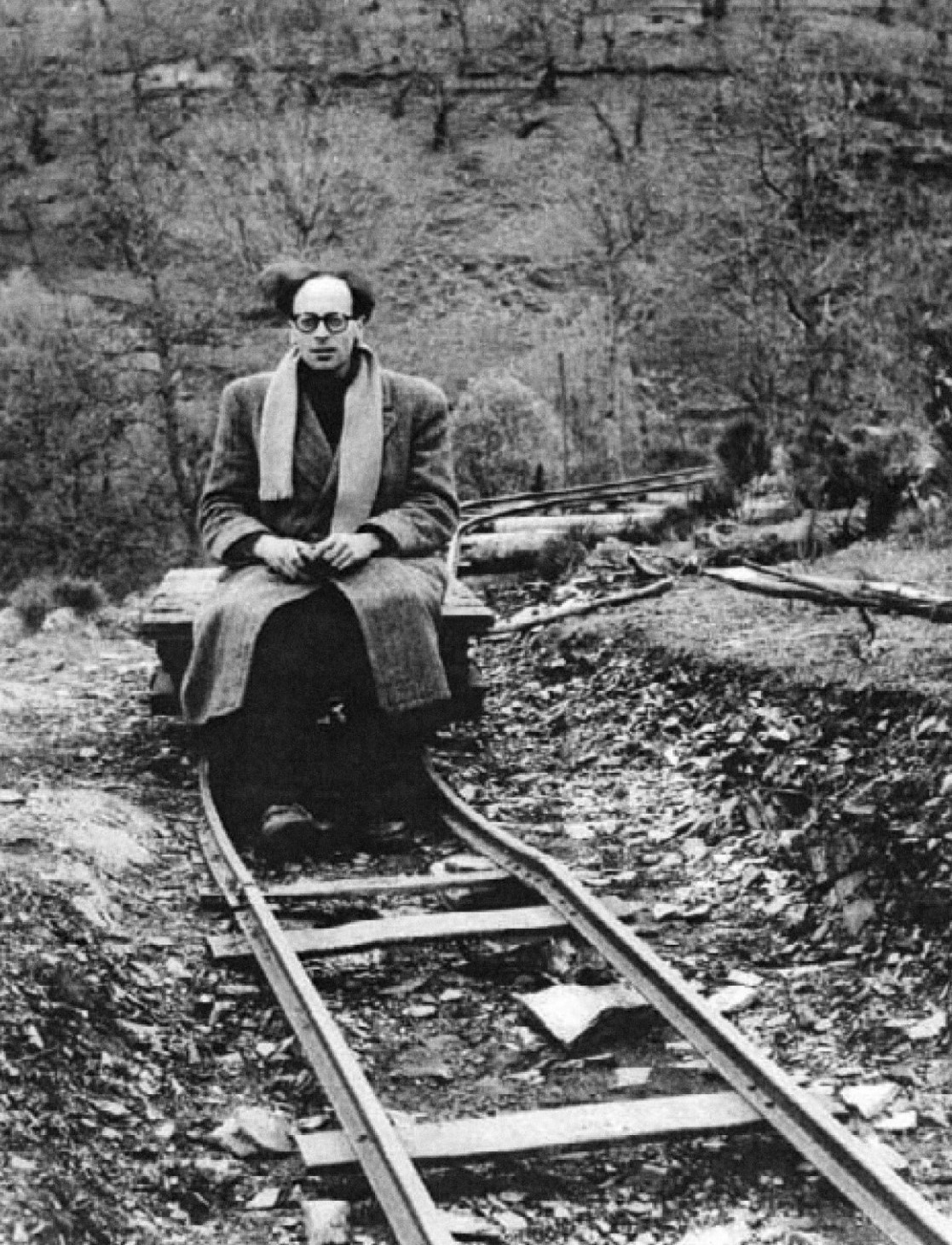
However, these “privileged” people were all deported and then liquidated. The forger, before being an expert in forgery, was therefore a man who was not unaware of fear, who knew about surveillance, imprisonment and the threat of extermination. Only the chance of his birthplace and therefore his nationality took care of this Jew, the Argentinean consulate playing cat and mouse with the Gestapo from 1940 to 1943.
Jews are often suspected and even accused of cosmopolitanism, when all they ask for is to live as free citizens in the countries where their families were born. Adolfo Kaminsky, marked by the surprising dissonance between his Spanish first name and his Russian surname, will have added a very long clandestine life to the forced wandering of his parents, their long game of snakes and ladders: Russia from where his family, after having suffered pogroms, was expelled in 1917, the Argentina of his birth, the Vire of his childhood in the Calvados département of France, where, as a child, he gave away his marbles to avoid being called a Jew, and where he learned everything from a pharmacist, also a member of the Resistance, who trained him in dyeing. He would teach himself chemistry.
Russia, Paris, Argentina, Turkey, then Paris again… His parents had emigrated the first time, out of necessity, because of the political and racist persecutions of the Tsarist regime, but also in the hope of these Eastern Jews who told each other that they would be “happy like God in France,” a translation of a Yiddish aphorism, this language of most Ashkenazi Jews: “Men ist azoy wie Gott in Frankreich!” In the nineteenth century, this phrase summarized quite well the state of mind of Central European Jews who idealized republican and secular France, the first country to grant the Jews emancipation.
The collusion between centuries of anti-Jewish Christian civilization, the opening of the ghettos which allowed a Jewish existence in the full light of civil equality, and the xenophobic ideology of the far-right leagues had contributed to the fact that this Republic, which was welcoming to those who were not native Frenchmen, had difficulty in eliminating an old popular anti-Semitism which attempted to insinuate itself into law. The example of Alphonse Bertillon attests to this: Bertillonage, the technique adopted by Paris’ prefecture of police in 1879, was based on biometric analysis, i.e., on an identification system based on specific measurements, accompanied by photographs of the face and profile. It allowed for the registration of repeat offenders, and was later extended to “madmen” found on the public way, to unidentified corpses in the morgue, to foreigners, and then, after Bertillon’s death, to foreigners who were not allowed to stay in France, and finally to nomads, who were registered in an anthropometric identity booklet in 1912.
This system of pseudo-scientific registration would eventually show Bertillon’s true face by leading him to a notorious anti-Semitic falsification. The aberrant mathematical measurements he made on the famous bordereau allowed him to impress the jury at Alfred Dreyfus’ retrial in 1899, until Poincaré and other mathematicians demonstrated the inanity of the thesis according to which the captain had imitated his own handwriting. In the rigorous precision of his chemical processes, Kaminsky was the anti-Bertillon par excellence, thwarting this mad rush of racial profiling, dissociating faces and names, giving new clothes to these naked lives, to these humans caught in the act of existing.
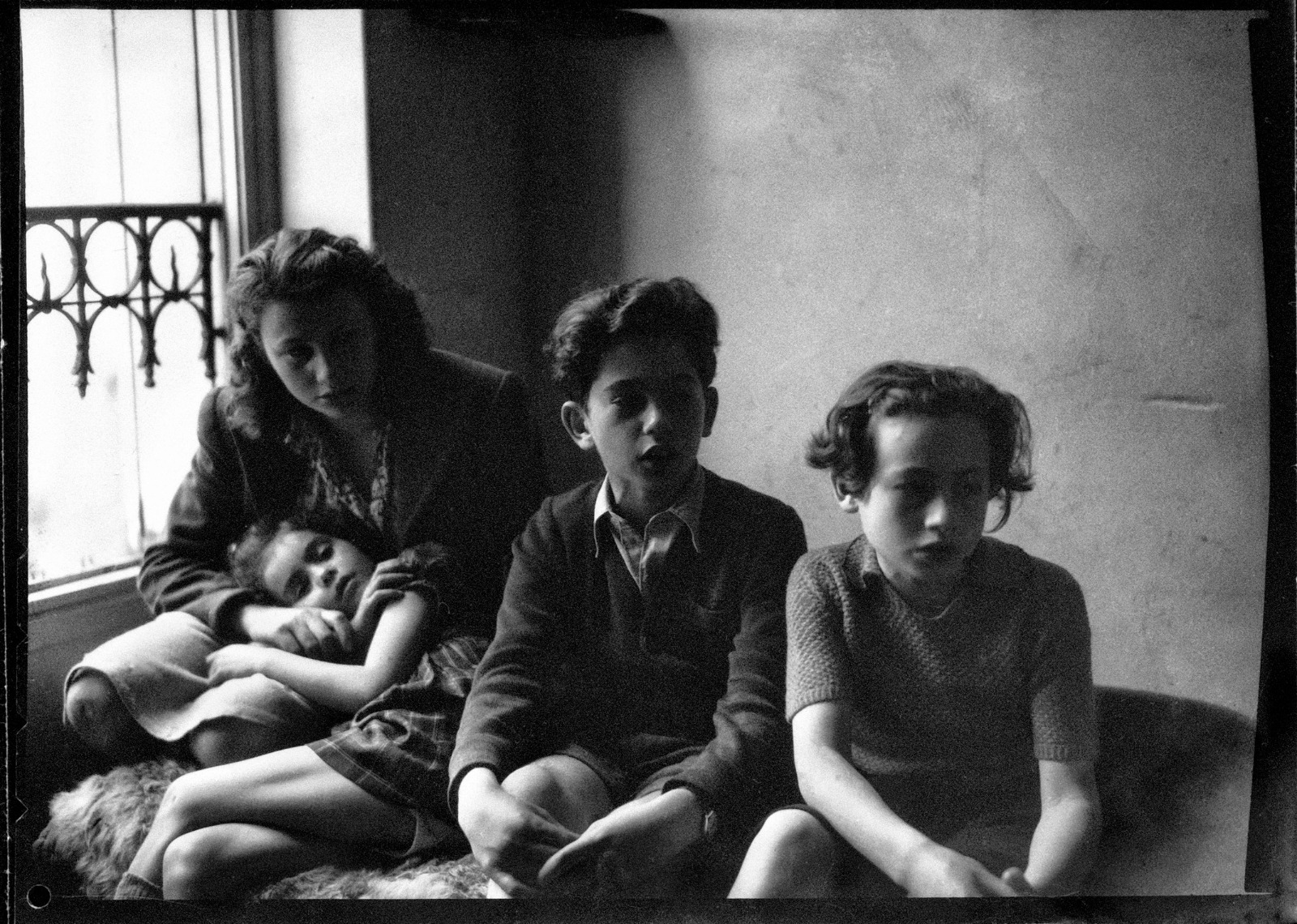
France, and not only its fascist leagues, but its governments, including the Popular Front government, was therefore hard on foreigners, as historian Yvan Jablonka recounts in his book, Histoire des grands-parents que je n’ai pas eu (The Story of the Grandparents I Never Had), whose fourth chapter is entitled: “Les sans-papiers juifs de ma famille” (The undocumented Jewish members of my family).
The chronology of exclusion is sobering:
1932, a quota of 5% for foreigners employed at companies contracting with the State;
1933, the obligation for doctors to have French nationality;
1934, the exclusion of naturalized citizens from the civil service and the bar;
1936, measures of clemency for German refugees but implacable provisions for all others;
1937, orders to prefects to “ruthlessly turn away any foreigner who tried to enter the country without a valid passport or travel document”;
1938, the intensification of the hunt for illegal immigrants.
All these measures, it should be remembered, were taken by the French Republic BEFORE Vichy, the criminal French State, was established.
The Sanctity of False Papers
The permit to live, for those who had committed only the crime of existing, was first and foremost that of continuing to persevere in being, instead of collectively undergoing the atrocious transports in cattle cars to then be exterminated in the gas chambers. Thus, it must be said that Adolfo Kaminsky made the first false papers for himself and his family. But then, without any knowledge of Hebrew culture and without the slightest religious belief, this non-believer, who was a man of conscience, joined the great ethical tradition of prophetic Judaism, that of Hillel, a wise man who lived around the same time as Jesus.
Hillel pronounced these words, whose imperious crescendo never ceases to resonate in my philosophy: “If I am not for myself, who will be for me? If I am only for myself, what am I? And if not now, when?” I wonder, with all the discretion that is necessary before a life of which a great part was spent in concealment, if an episode that Adolfo confided to his daughter Sarah, his interlocutor, and that she reported in the book that she wrote about him, does not secretly reveal the foundation of his commitment.
The scene takes place at the beginning of the war in “La Maladrerie” in Caen, a prison where the Nazis locked up politicians and Jews and where, in 1944, they shot 87 men and women. A fellow prisoner, about to die, asked Kaminsky’s father to recite the Jewish prayer for the dead before he breathed his last. Kaminsky had been a member of the Bund, the General Union of Jewish Workers of Lithuania, Poland and Russia, a Jewish socialist movement founded at the end of the 19th century in the Russian Empire. The Bund advocated for the emancipation of Jewish workers, defending their right to form a secular Yiddish-speaking nationality all the while opposing Zionism and Bolshevism. And this father, Salomon Kaminsky, completely irreligious but not deracinated, finding the memory of his own father’s ancestral Hebrew words, pronounces the Kaddish, in a kind of presentiment, to confirm a genealogical and historical alliance.
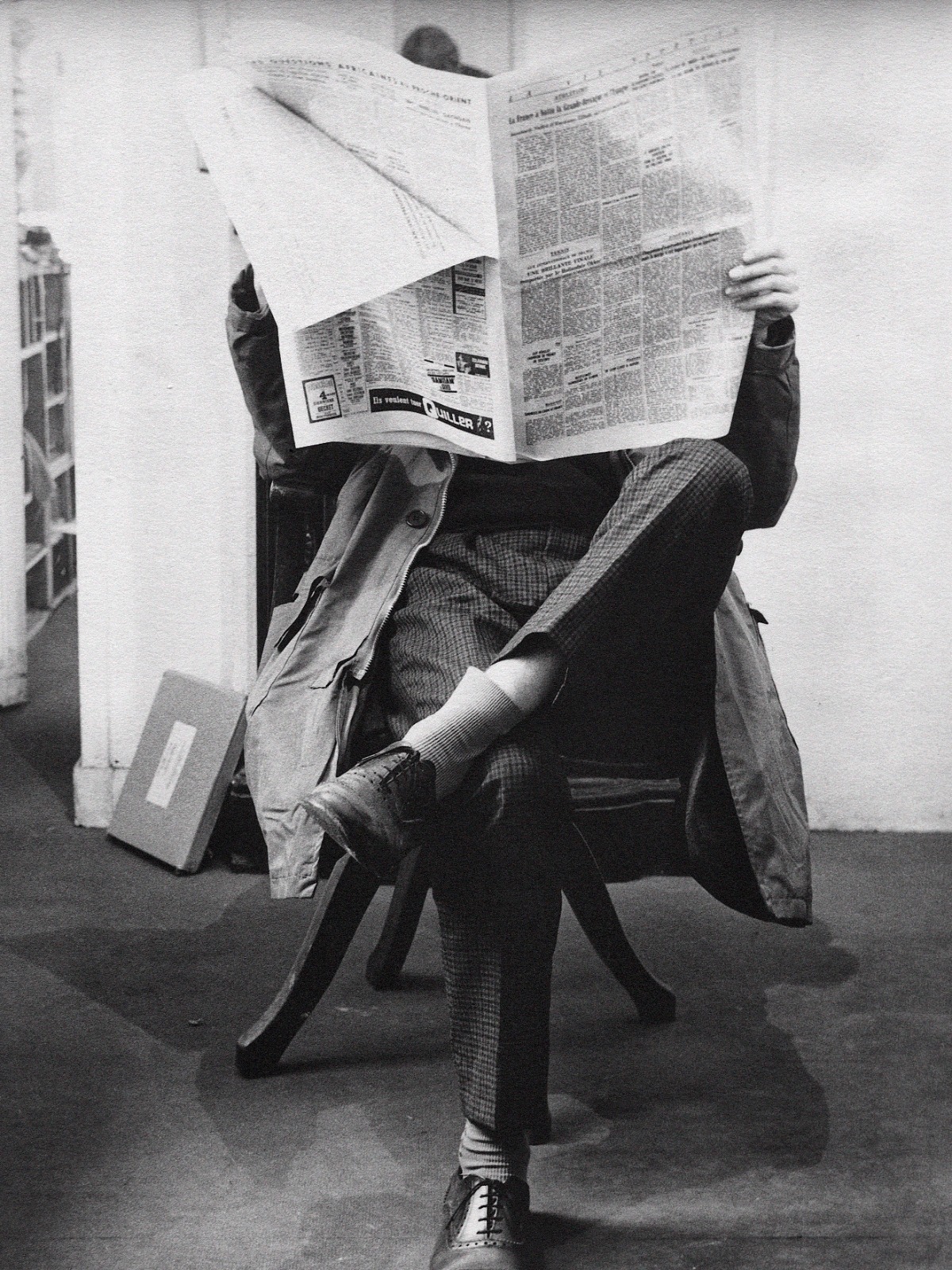
Robert Davezies, a priest and labor activist who during the Algerian war became involved in a network of support for the Algerian people, said with a sublime mixture of clairvoyance and awkwardness that he himself, who had never stopped reading the Bible, felt a mysterious closeness to Kaminsky whose ancestors had read it from generation to generation. This was not the only tragic moment that gave Kaminsky’s involvement in the Resistance its sense. At the beginning of the war, his mother fell to her death, thrown off a train returning from Paris, where she had gone to warn her brother of an imminent arrest. The father and the oldest son went to claim her body, but they hid the death – a murder – from the younger ones.
When Adolfo suddenly became aware of this murder, on the very day he was told that his best friend had been shot by the Germans, he felt a terrible childish pain. To avenge his mother and friend, he began to make corrosive materials for sabotage and detonators.
Later, Kaminsky became in his own way the anti-Montandon, the underground enemy of the doctor who was the theorist of French ethno-racism and so-called scientific anti-Semitism. In October 1941, Georges Montandon contributed to the organization of the criminal Berlitz exhibition, which aimed to teach the population “How to recognize a Jew?” From December 1941, he was attached to the General Commissariat for Jewish Questions as an “ethnologist.” In this capacity, he was paid to issue certificates of non-membership in the Jewish race, certificates of survival. He conducted 3,800 ethno-racial examinations and was paid even when his examination resulted in people being sent to their death.
Kaminsky will tell the story of how a young blond hooligan, Ernest Appenzeller, an underground Zionist Jew, managed to fool Montandon at Drancy by passing off his circumcision as a surgical procedure. The first scene of Joseph Losey’s admirable film, Mr. Klein, shows a doctor groping an older, totally naked woman whom he declares to be Jewish, without telling her, after having examined her in detail like a horse trader inspecting a beast at the market.
The “office crimes” of the collaborationist policy were systematically answered throughout the Dark Years by Kaminsky’s handiwork. The skills of this young man, self-taught by necessity, who had received lessons in algebra and arithmetic from another internee at Drancy, a professor who had been dismissed from the École Polytechnique, and who, under normal circumstances, could have made a career as a scientist, this boy whom the resistance fighters called “the Technician,” was able to perfect his skills with each new request. He made from scratch, for the benefit of the persecuted, families and individuals, up to 500 new false papers per week, ration cards, baptismal certificates, birth certificates and, later, for the French army, German papers, police cards. He made embossed stamps – for the prefecture and the town hall – by photo-engraving, and he would deliver them himself at the risk of being arrested, of being locked up again for an offense considered a crime by the authorities of the time, and which would have earned him a firing squad, his Argentine nationality no longer being sufficient to protect him.
To save lives by de-naming and renaming living people destined for extermination, changing their places and dates of birth, their places of residence, their national and religious affiliations, and making them temporarily invulnerable, was the task he decided to take on one day. He gave each of the victims of state anti-Semitism the password, the “home-grown” name that would allow them to belong a little longer to the society of those who have a future ahead of them.
I think of my grandmother, Anna Hornstein, of my uncle Albert Feinstein, of my aunt, of my first cousins, Micheline and Daniel, aged eleven and nine, murdered after having not hidden or procured false papers. A story Adolfo tells Sarah breaks my heart: a woman whose children he sees eating dinner and who he knows will be rounded up the next day angrily rejects the forged documents he brings her and throws him out. The refusal to wear the Jewish badge, but also to change one’s name and place of residence, this fatal illusion of having the right to live, came from a feeling of innocence, from a boundless confidence in this country which, since the French Revolution, year after year, emancipated, welcomed and naturalized the Jews: it was, simply, tragically, the denial of an incomprehensible hatred.
Kaminsky, Tillion: The Same Historical Consciousness
To put oneself outside the law in the name of one’s own concept of legitimacy was exactly, on the part of these two unarmed heroes, the repetition of a Gaullist gesture, that of June 18, 1940. Germaine Tillion became a great friend of Kaminsky’s after the war, understanding that she and he had built extraordinary, rigorously analogous lives: resistance to Nazism, first, and then the refusal of the horrific escalation of terrorism and torture in Algeria.
I see a precursor of the profound fraternity uniting these two heroes who fought without arms but in a non-peaceful manner in Germaine Tillion’s decision at the end of 1940 to give her family’s papers to a Jewish family, who would thus be protected until the end of the war. This ethnologist, a student of the Arabist Louis Massignon, had begun her career in the Aurès, a mountainous region in Algeria, where she made two visits before the war. It was on horseback that she joined the tribe of Ouled Abderrahmane, nomadic livestock farmers who grazed their animals sometimes on the edge of the Sahara, sometimes on the heights. During her second expedition, she noticed both the deterioration of living conditions and the existence of a growing anti-Arab racism.

During the Exodus, as Frenchmen fled the German advance by the millions, she and her mother heard Pétain’s speech on June 17 and said a categorical “no” to his call to halt the combat. Germaine Tillion – she was thirty-three years old – immediately participated in the clandestine activities of this group of early Resistance fighters, which she took to calling after the war the “Musée de l’Homme Network.” Arrested, accused in particular of assisting liberated colonial prisoners, helping Resistance fighters to escape, and rescuing parachutists, she was imprisoned at the Santé prison and underwent seven interrogations. Charged, she was transferred to Fresnes where, in January 1943, she learned that her mother had been arrested. Since 1941, the Nacht und Nebel (Night and Fog) decree provided for the deportation of all opponents or enemies of the Reich. Individuals who posed a danger to the security of the German army and who were marked “NN” were to disappear in absolute secrecy. In October 1943, Germaine Tillion, declared NN, was deported without trial and taken with twenty-four other prisoners from Fresnes to the Ravensbrück camp. Her mother, Émilie, was deported in February 1944 and gassed in March 1945 because she was too old to work.
In 1940, Stalin decided to hand over to Hitler the German communists who had taken refuge in the Soviet Union; Margarete Buber-Neumann, after two years in the gulag, was handed over to the Gestapo who interned her at Ravensbrück. Germaine Tillion developed a deep friendship with her, and Buber-Neumann’s experience of Soviet and German concentration camps greatly influenced Tillion’s future activism. Thus, in 1950, she accepted David Rousset’s proposal to join the International Commission Against the Concentration Camp Regime. This group, which first worked on the Soviet concentration camps, later expanded its field of observation to Greece and Algeria, and was at the origin of the courageous fight against both fascist and Bolshevik totalitarianism.
When, on November 1, 1954, (known as Toussaint Rouge in France), the Algerian war broke out, Germaine Tillion opposed the war. Germaine Tillion opposed the bloody escalation, the torture practiced by the French army and the indiscriminate attacks of the FLN, as did Kaminsky, who made false papers for the FLN and the Jeanson network. Yacef Saadi, in charge of the autonomous zone of Algiers, hunted down by General Massu’s paratroopers, asked Germaine Tillion for an interview that took place on July 4, 1957 in the Casbah of Algiers.
Why her? Because of her long-standing attachment to the peoples of Algeria and her past as a deported Resistance fighter. She met him secretly, surrounded by three of her comrades. The exchange lasted five hours and Yacef Saadi committed himself to putting an end to the indiscriminate attacks on the condition that executions would stop. In 1958, Saadi had managed to convince an FLN official to limit attacks in metropolitan France only to military, police and industrial targets. The truce lasted a few weeks until five people were guillotined in Algiers. Back in Paris, Tillion met André Boulloche, a former Resistance fighter and deportee, who was the chief of staff to De Gaulle, who had just returned to power. It was thus decided in high places to resume contact “at her own risk” with an FLN leader. In August, she met again with Yacef Saadi. He was arrested in September and during his trial in July 1958 in Algiers, Germaine Tillon testified on his behalf. Sentenced to death, he was pardoned in 1959 by General de Gaulle, who was sensitive to the irreproachable past of the woman who had testified on his behalf.
The text of her testimony, published in the press in 1958, drew the ire of some, leading Germaine Tillion to respond publicly, in 1964, to Simone de Beauvoir who, unreservedly committed with Sartre to the FLN cause, had called her mediation “a dirty trick”:
“It so happens that I have known the Algerian people and that I love them; it so happens that I have seen their sufferings with my own eyes, and ‘it so happens’ that this wounded me; it so happens, finally, that my attachment to our country has also been reinforced by years of passion. It is because all these strings tugged at me at the same time, and that none of them broke, that I neither broke with justice for the love of France, nor broke with France for the love of justice.”
And, in another letter, she wrote:
“I cannot but think that Patries, Parties, sacred causes are not eternal. What is eternal (or almost eternal) is the poor suffering flesh of humanity.”
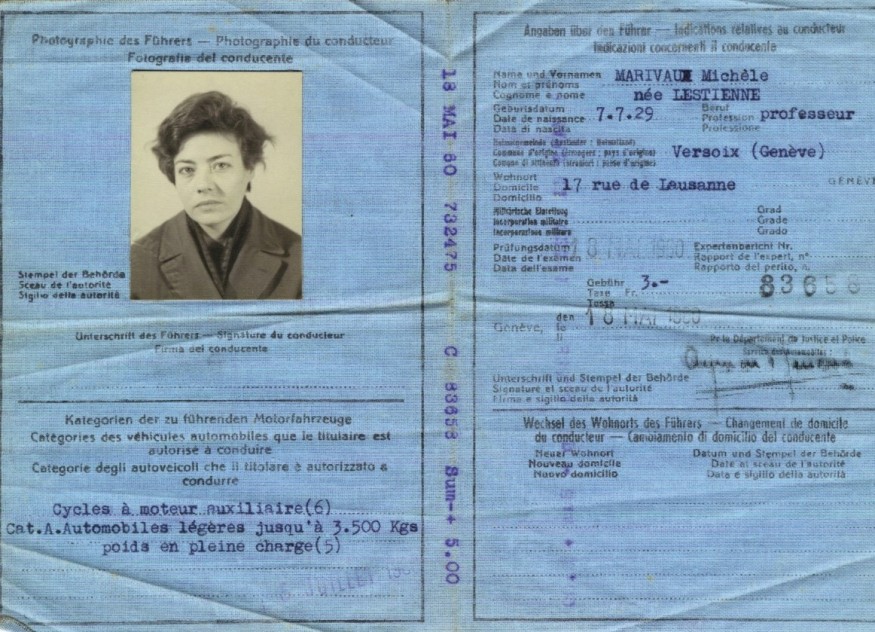
“The Logical Continuation of My Story”
Kaminsky worked during the civil war for the Jeanson network, whose members were tried in September 1960, implicating six Algerians and seventeen Frenchmen accused of having supported the FLN. Jeanson himself, convicted in absentia, was in hiding and needed several identity cards to be able to move around. This means that after the liberation of Paris, a moment of popular jubilation and amnesia that he did not share, the production of false papers had not stopped. The absolute urgency of survival was followed by the necessity, indeed the obligation, to defend just causes and their activists. Kaminsky fought, in his own way, which was no less risky than that of the armed fighters, for the right of peoples to national self-determination. Before fabricating false identities for the Algerians of the FLN and those who supported them in France, he made a large number of fake visas for Jewish survivors of the Holocaust who did not want to return to their country of origin but were determined to emigrate to Palestine, then under the British Mandate.
One page of the book he wrote with his daughter Sarah refers to the situation of Holocaust survivors who did not want to return to their countries of origin, places where they had been persecuted by the native populations. Nor did these survivors want to become refugees or remain stateless. Kaminsky, invited by a member of the Zionist movement to accompany American soldiers on a visit to a displaced persons’ facility for Jewish orphans in Germany, saw hordes of wild children, aged six to fourteen, armed with sticks and showing no fear whatsoever, attack their vehicle. The GIs flashed their guns, and they made it through. It was this experience that decided him to resume the manufacture of false papers to help these survivors, who no longer trusted anyone, emigrate to Palestine.
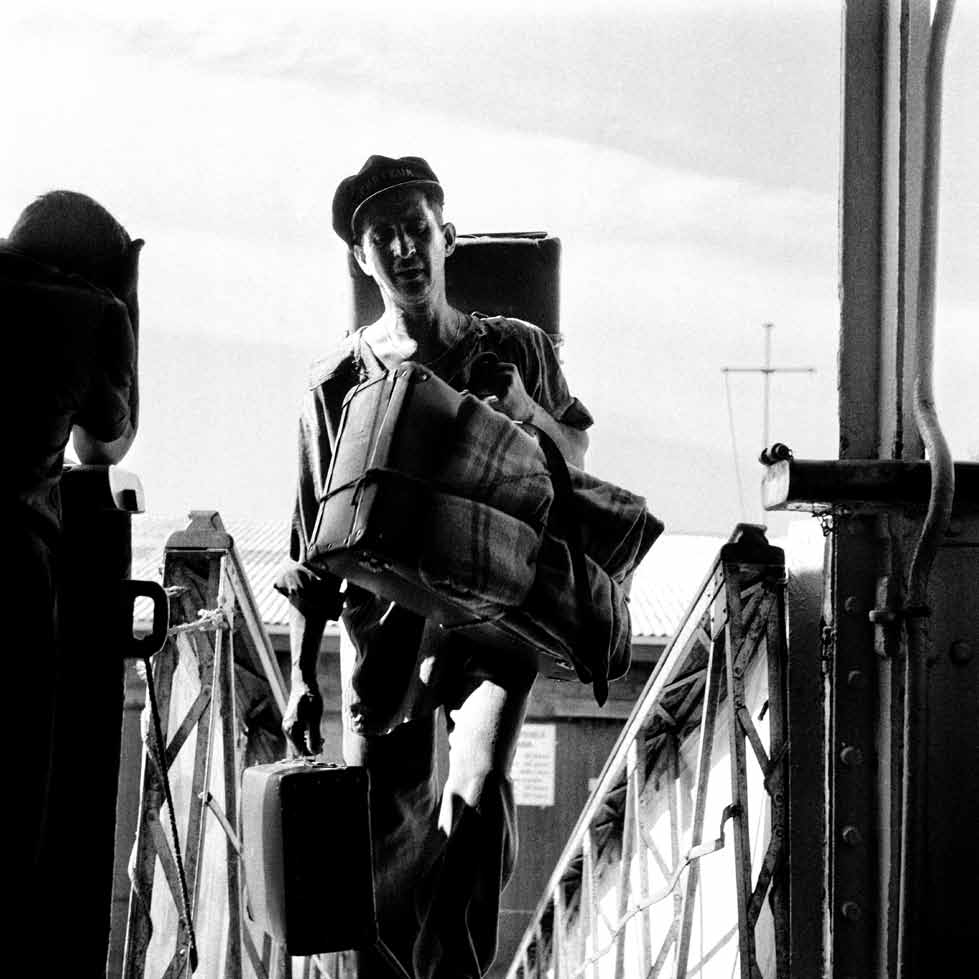
The tribulations of the SS President Warfield, renamed Exodus 47 – Exodus from Europe – are well known from the film by Léon Uris, but it was not the only ship that left France with thousands of men, women and children on board and was turned back by the British navy. The 4,500 emigrant passengers that the Exodus carried were all supposed to have valid passports. In reality, they did not have legal immigration certificates for Palestine, even though the British strictly limited Jewish immigration to that country. Moreover, passengers who had destroyed their papers on board refused to disembark until they had reached their final destination. Rescued from extermination, they came from everywhere: Siberia, Russia, Poland, Czechoslovakia, Bulgaria, Hungary, Romania, Austria, Germany, France, Belgium, Luxembourg, Holland, Sweden, England, the Americas, North Africa, Switzerland… Beyond a great diversity of convictions and traditions, what brought them together was the hope of reaching the shores of the country that a year later would become the State of Israel. The British Royal Navy seized the ship, and the British government dared to send all the passengers back to Germany, to the British-controlled zone. If two stories were to characterize Adolfo Kaminsky, the purity, the uprightness, the selflessness and the gentleness, in spite of everything, of his extraordinary life, I would recall two decisions that he made, one at the time of the Exodus, the other at the time when the Algerian war had just ended. British foreign minister Ernest Bevin, known for his anti-Semitism, had tried to oppose the creation of the State of Israel. He initiated the Anglo-American Commission of Inquiry of 1946, whose third recommendation was that “Palestine be neither a Jewish nor an Arab state.” Since he was responsible for the Exodus affair, the Stern Group, the Zionist armed organization in Mandatory Palestine, ordered Kaminsky to make a watch that would detonate a bomb intended to kill Bevin. But the “technician” who never failed sabotaged the mechanism so that the bomb would not explode.
The other decision of this pacifist fighter concerns the production of counterfeit banknotes intended to flood and thus weaken France, which the FLN had ordered from him. He produced a considerable quantity of them, which he accumulated in his cache in Belgium. But as soon as the Evian Accord signaled the end of the Algerian conflict, he burned them, in a virtuous autodafé lasting several days.
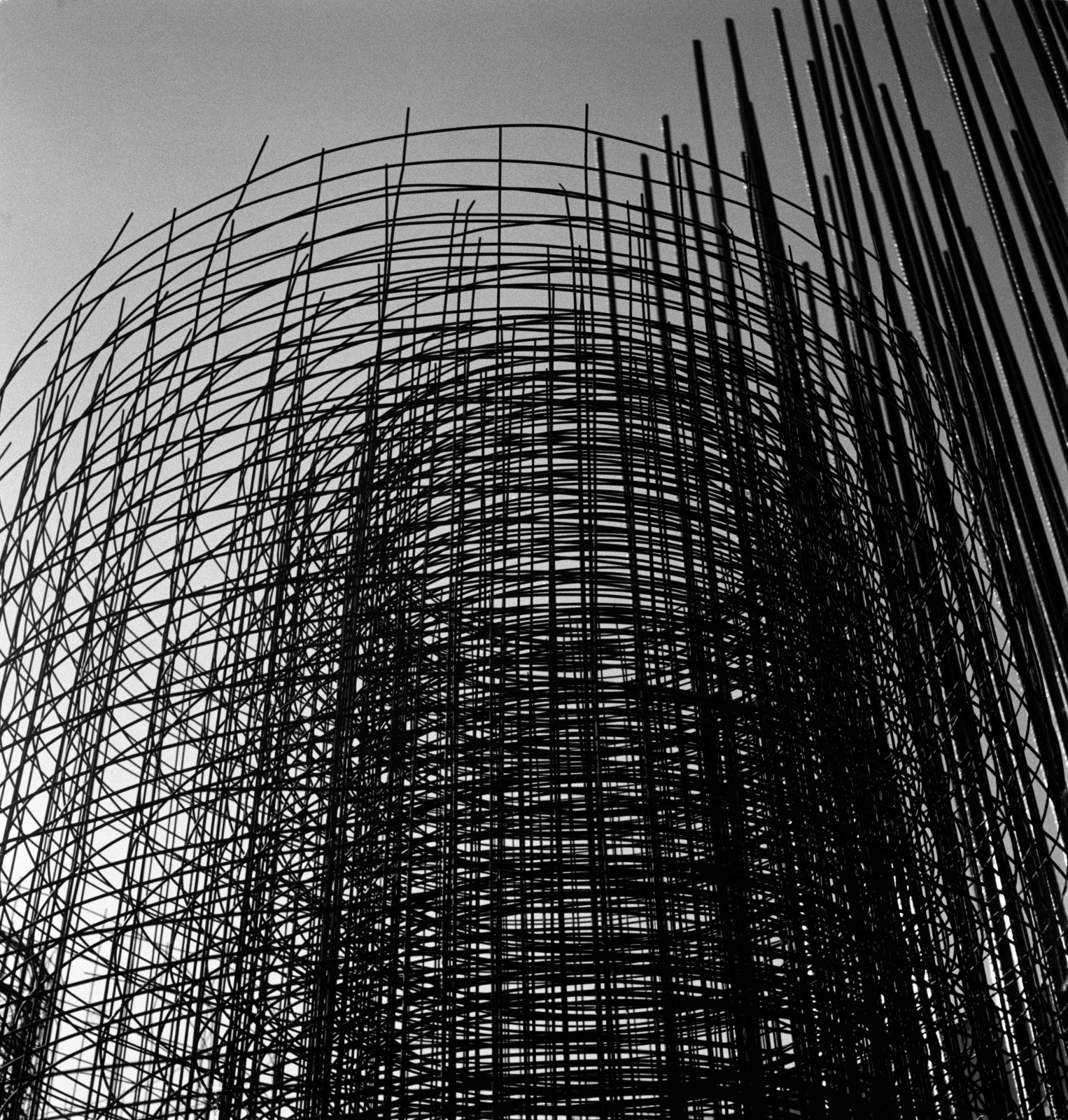
“I Wanted to Be a Painter…:”
I keep thinking of three writers when I look at the photos taken by Kaminsky. First of all, Roland Barthes, author of Camera Lucida, a book about photography, or more precisely about a photograph.
“For me, the Photographer’s organ is not his eye (which terrifies me) but his finger: what is linked to the trigger of the lens […]. I love these mechanical noises in an almost voluptuous way, as if, in the Photograph, they were that very thing – and the only thing – to which my desire clings, their abrupt click breaking through the mortiferous layer of the Pose[…] Something arises from the scene, shoots out of it like an arrow, and pierces me. A word exists in Latin to designate this wound, this prick, this mark made by a pointed instrument; this word suits me all the better since it also refers to the idea of punctuation and since the photos I am speaking are in effect punctuated, sometimes even speckled with these sensitive points; precisely, these marks, these wounds are so many points. I will therefore call this element punctum; for punctum is also: sting, speck, cut, little hole – and also a cast of the dice. A photograph’s punctum is the accident that pricks me (but also bruises me, is poignant to me […]). To perceive the punctum, no analysis would be of any use to me […], it suffices that the image be large enough, that I do not have to study it (this would be of no use at all), that, given right there on the page, I should receive it right here in my eyes […]. Certain details may ‘prick’ me.’”
“If they do not, it is doubtless because the photographer has put them there intentionally. […] What I can name cannot really prick me. The incapacity to name is a good symptom of disturbance. […] The punctum: whether or not it is triggered, is an addition: it is what I add to the photo and what is nonetheless already there.”
This book, Camera Lucida, entirely centered on the presence-absence of the beloved mother that Barthes has just lost and that he finds only by looking at a photo of her as a child corresponds, it seems to me, to the experience and work of the photographer Adolfo Kaminsky, whose mother was found on a railroad track, thrown off a train, which remained, by his own admission, an ever-present trauma on which he built his life. There are, in certain photos, says Barthes, punctuations that escape the photographer, that pierce the one who looks at them but that one has almost nothing to say about.
Going back in time, I think of Walter Benjamin, a German theorist of literature and history, who fled Nazism and committed suicide at the Spanish border for fear of being arrested and handed over to the French police, who would have turned him over to the Nazis. He wrote decisive texts on the work of art in the age of mechanical reproduction, on photography and its history. “Of the countless movements of switching, inserting, pressing and the like, the ‘snapping’ of the photographer has had the greatest consequences,” he says. “A touch of the finger now sufficed to fix an event for an unlimited period of time. The camera gave the moment a posthumous shock, as it were.”
Yet this recognition of the miraculous character of photography is accompanied in Benjamin by a haunting obsession, the loss of the aura: what disappears in fact in the work of art at the time of its mechanical reproducibility, it is its hic et nunc, its here and its now. He defines the aura as “the unique appearance or semblance of a distance no matter how close it may be.” However, the development of the techniques of reproduction modified the perception of the spectator who has the impression that the art is more accessible to him even if the singularity of its appearance is robbed from him, this provision of the images revealing him in reality their disappearance.

I think finally of Baudelaire whom Walter Benjamin read and commented on with relish. In The Painter of Modern Life, speaking of the painter Constantin Guys, who “loves mixing with the crowd, loves being incognito,” Baudelaire already seemed to praise the art of photography: “The observer is a prince enjoying his incognito wherever he goes[…] he may be compared to a mirror as vast as this crowd; to a kaleidoscope endowed with consciousness, which, with everyone of its movements, presents a pattern of life, in all its multiplicity, and the flowing grace of all the elements that go to compose life.” However, even as an anti-modern who invented the concept of modernity, he can write of photography that “the industry erupts into the sphere of art, becomes the mortal enemy of the latter […]. But if once it be allowed to impinge on the domain of the intangible and the imaginary, on anything that has value only because man adds something to it from his soul, then woe betide us!”
Woe to us? Or perhaps rather happiness to have the occasion to reawaken to the old meaning of this mysterious German word Augenblick, which is translated as “instants.” It is composed of the two words Augen, eye, and Blick, look. It is the taking of a view, the possibility of taking stock of the situation in one go, it is the present that suddenly makes sense. And this is sometimes what photography is, especially when it is practiced by a fully human artist, what the Yiddish language calls a Mensch.
Elisabeth de Fontenay
Notes
| 1 | It is in partnership with the mahJ that the City Hall of Paris Centre is dedicating an exhibition to Adolfo Kaminsky until February 26, 2022. |
| 2 | Enlisted in the fight against Franco in Spain, this man came to learn from Adolfo at the forged papers laboratory on rue des jeûneurs. Since his face cannot be discovered, he poses behind a newspaper |

